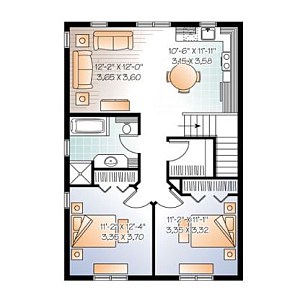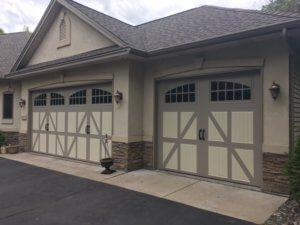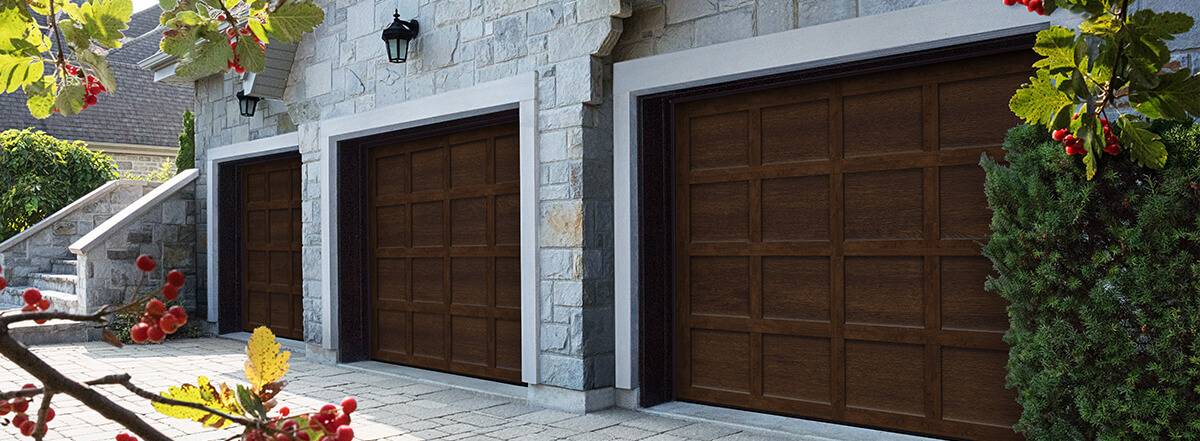
Insulated garage doors are an effective way to help regulate the temperature of your garage space and reduce energy costs. They protect your belongings, keep out the elements and noise, and are very effective at blocking out extreme weather. Whether you are replacing your old door or installing a new one, make sure you get the right insulation for the job.
One of the simplest and most cost-effective forms of garage door insulation is a radiant barrier. This insulation kit costs half as much as a foam kit. After the kit is installed, you can attach it to your door with the help of plastic clips. This door insulation will keep your garage warm and cool in summer, while keeping it warm in winter.
Polyurethane is another form of garage door insulation that is very popular. Polyurethane is an extremely dense and fire-resistant material that is sprayed into the door frame. Polyurethane has many benefits and is more durable that polystyrene. Polyurethane has many benefits beyond its ability to act as a thermal insulator. It can also resist chemicals and can withstand temperatures to 700 degrees Fahrenheit.

Insulated glass garages are a great option. They are popular for many reasons. You can improve curb appeal by using them. They allow in lots of natural lighting. Plus, they are a great choice for reducing noise and dampening the effects of street traffic.
One of the most impressive aspects of a insulated garage door is its ability to control temperature. It keeps your garage at a consistent temperature which is important for food storage. An insulated garage door will make sure that your family's food is fresher for longer periods of time and that your cars won’t be damaged by temperature fluctuations.
Insulated garage doors also make it easier to keep your garage cool during summer. During the hot months, the lingering moisture in the air can increase humidity levels and cause mold to form. And if your garage is attached to the rest of your home, the increased humidity can damage your possessions.
The following tips can help you determine if an insulated garage door is right for you. If the door isn't being used, make sure it is locked. Insulate your garage roof and floor. Insulate your walls. Fourth, if possible, get a certified insulation from organizations such as Energy Star.

It will save you time, money, stress, and money. You can make it a fun, exciting DIY project for your whole family. You have two options when you are ready to upgrade your front door. Either hire a professional or go it yourself. You also have the option to choose from custom options like a stained glass window.
FAQ
How long does it take for a bathroom remodel?
It usually takes two weeks to remodel a bathroom. The size of your project will affect the time taken to remodel a bathroom. Smaller jobs, such as adding a shower stall or installing a vanity, can be completed in a day or two. Larger projects such as removing walls, laying tile floors, or installing plumbing fixtures may require several days.
The rule of thumb is that you should allow three days for each room. For example, if you have four bathrooms you would need twelve days.
Is $30000 too much for a kitchen redesign?
The cost of a kitchen remodel can vary from $15000 to $35000, depending on the amount you spend. Expect to spend over $20,000. For a complete kitchen renovation. If you are looking to upgrade appliances, paint or replace countertops, it is possible to do this for less than $3000.
An average cost for a complete renovation is between $12,000-$25,000. There are ways to save money but not sacrifice quality. A new sink can be installed instead of replacing an older one. This will cost you approximately $1000. A second option is to buy used appliances at half their cost.
Kitchen renovations will take longer than any other type of project, so plan ahead. You don't want to start working in your kitchen only to realize halfway through that you're going to run out of time before completing the job.
Start early. Begin to look at your options and get quotes from several contractors. Then narrow your choices based price, availability, quality, or both.
Once you've found a few potential contractors, ask for estimates and compare prices. The best bid may not be the most affordable. It is important that you find someone with comparable work experience to provide an estimate.
Be sure to take into account all additional costs when you calculate the final cost. These may include labor or material charges, permits and so forth. Be realistic about the amount you can afford, and stick to your budget.
Tell the contractor if you don't like any of the bids. Tell the contractor why you don't like the initial quote and offer another chance. Saving money is not a matter of pride.
What's included in a complete kitchen remodel?
A kitchen remodel includes more than a new faucet and sink. There are also cabinets, countertops, appliances, lighting fixtures, flooring, plumbing fixtures, and much more.
Full kitchen remodeling allows homeowners to make small changes to their kitchens. The contractor and homeowner will be able to do the job without any demolition, which makes the project much easier.
Kitchen renovations include various services, including electrical, plumbing, HVAC, carpentry, painting, and drywall installation. A complete kitchen remodeling project may require multiple contractors depending on the size of the job.
A team of professionals is the best way to ensure that a kitchen remodel runs smoothly. Many moving parts can cause delays in kitchen remodels. You should plan ahead and prepare a backup plan for any unexpected situations if you decide to DIY.
How much would it be to renovate a house vs. what it would cost you to build one from scratch?
Gutting a home removes everything inside a building, including walls, floors, ceilings, plumbing, electrical wiring, appliances, fixtures, etc. It is often done when you are moving to a new location and wish to make some improvements before you move in. Because of the many items involved in gutting a house, it is usually very costly. Depending on the job, the average cost of gutting a home is between $10,000 and $20,000
A builder builds a house by building it frame by frame. Then, he adds walls and flooring, roofing, windows and doors. This is usually done after buying a lot of lands. Building a home can be cheaper than gutting. It usually costs around $15,000-$30,000.
When it comes down to it, it depends on what you want to do with the space. If you are looking to renovate a home, it will likely cost you more as you will be starting from scratch. It doesn't matter if you want a home built. You can build it the way you want it instead of waiting for someone else to come in and tear everything up.
How much does it take to tile a bathtub?
If you're going to do it yourself, you might as well go big. A complete bathroom remodel is an investment. It is worth the investment in high-quality fixtures and materials, especially when you consider the long-term benefits of having a beautiful space that will last for many years.
The right tiles will make a big difference in the way your room feels and looks. So whether you're planning a small project or a major renovation, here's a quick guide to help you choose the best products for your home.
First, decide which type of flooring you'd like to install. Ceramics, porcelain, stone, and natural wood are common choices. Select a style, such as classic subway tiles or geometric patterns. Choose a color combination.
You'll probably want to match the tile to the rest of the room for a large bathroom remodeling job. For example, you may opt for white subway tile in the kitchen and bath area while choosing darker colors in other rooms.
Next, estimate the scope of work. Is it time for a small update to the powder room? Do you want to add a walk-in wardrobe to your master bathroom?
Once you have decided on the scope of the project, visit your local store to view samples. This will allow you to get a feel for how the product is assembled.
Shop online for amazing deals on ceramic and porcelain tiles Many retailers offer free shipping and discounts on bulk purchases.
What should I do to my existing cabinets?
It all depends on whether or not you plan to rent your home out. You will need to take down and refinish your cabinets if you are selling. This gives buyers the impression that they're brand new and helps them envision their kitchens after moving in.
The cabinets should be left alone if you intend to rent your home. Many renters complain about the dishes that are dirty and the greasy fingerprints left by tenants.
You might also think about painting your cabinets to make them appear newer. Use a high-quality primer. Low-quality primers and paints can crack easily.
Statistics
- 57%Low-end average cost: $26,214Additional home value: $18,927Return on investment: (rocketmortgage.com)
- 55%Universal average cost: $38,813Additional home value: $22,475Return on investment: 58%Mid-range average cost: $24,424Additional home value: $14,671Return on investment: (rocketmortgage.com)
- Windows 3 – 4% Patio or backyard 2 – 5% (rocketmortgage.com)
- $320,976Additional home value: $152,996Return on investment: 48%Mid-range average cost: $156,741Additional home value: $85,672Return on investment: (rocketmortgage.com)
- According to a survey of renovations in the top 50 U.S. metro cities by Houzz, people spend $15,000 on average per renovation project. (rocketmortgage.com)
External Links
How To
How to Install Porch Flooring
While installing porch flooring is straightforward, it takes some planning. Installing porch flooring is easiest if you lay a concrete slab first. If you don't have a concrete slab to lay the porch flooring, you can use a plywood deck board. This allows you install the porch flooring easily without needing to make a large investment in a concrete slab.
Secure the plywood (or subfloor) before you start installing porch flooring. To do this, you must measure the width of the porch and cut two strips of wood equal to the porch's width. These should be laid along the porch's sides. Then, attach the strips to the walls by nailing them in place.
After attaching the subfloor to the surface, prepare the area where the porch flooring will be installed. Typically, this means cutting the top layer of the floorboards to size. You must then finish your porch flooring. Polyurethane is the most common finish. A stain can be applied to porch flooring. It is much easier to stain than to apply a clear coat. You only have to sand the stained areas once you have applied the final coat.
Now you are ready to put in the porch flooring. Measure and mark the location for the porch flooring. Next, cut the porch flooring according to your measurements. Finally, put the porch flooring in its place and nail it.
If you want to increase the stability of your porch flooring's floor, you can install porch stairs. Porch stairways are typically made of hardwood. Some people prefer to add their porch stairs before installing their porch flooring.
Once your porch flooring is installed, it is time for the final touches. First, you must remove the porch flooring and replace it with a new one. Next, clean up all debris. You must take care of dirt and dust in your home.